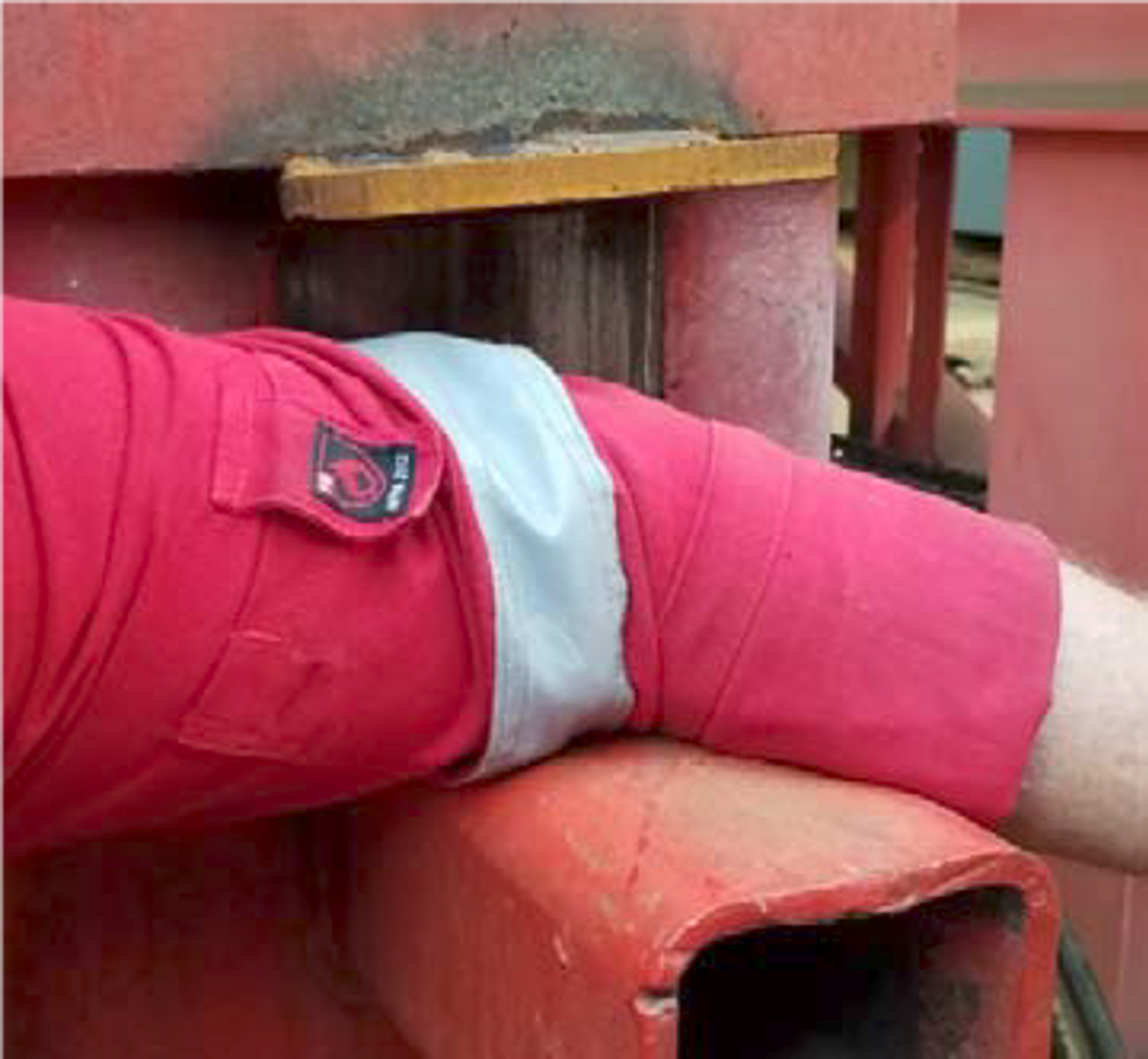Serious injury caused by energy isolation failure
- Safety Flash
- Published on 23 August 2018
- Generated on 14 July 2025
- IMCA SF 18/18
- 2 minute read
Jump to:
A yard worker was cleaning debris from underneath a hydraulic pipe.
What happened?
Whilst performing this task, the worker placed his forearm on a hydraulically operated pipe stand. This put the forearm in the line of fire between a lift pocket and a recently modified plate. A serious injury occurred to the worker’s forearm when the pipe stand (see photograph) was lowered by another worker operating the hydraulic lowering mechanism.

What went wrong? What were the causes?
- There were no energy isolation routines to prevent the lowering operation from occurring inappropriately, though this was covered and required by our members’ permit to work (PTW) system.
- There were simultaneous operations (SIMOPS) taking place and these presented risks which had not been properly assessed.
- There had been modification of this equipment and this had not been fully risk assessed.
- The task plan was not detailed enough to define all of the hazards in the work area.
- The injured person did not notice that his task placed him ‘in the line of fire’.
What actions were taken? What lessons were learned?
- All activities require a risk assessment. Where simultaneous operations have the potential to expose a person to harm, the PTW and isolation process should show that a higher level of control, communication and mitigation is in place.
- Use the MoC process to ensure that modifications to equipment are assessed and do not introduce a new hazard.
Members may wish to refer to:
- Line of fire (video)
- In the line of fire (video, IMCA HSS036)
- Guidelines for management of change (IMCA HSS001)
Related Safety Flashes
-
IMCA SF 08/17
12 April 2017
-
-
IMCA SF 09/12
4 September 2012
-
IMCA SF 07/08
10 April 2008
IMCA Safety Flashes summarise key safety matters and incidents, allowing lessons to be more easily learnt for the benefit of the entire offshore industry.
The effectiveness of the IMCA Safety Flash system depends on the industry sharing information and so avoiding repeat incidents. Incidents are classified according to IOGP's Life Saving Rules.
All information is anonymised or sanitised, as appropriate, and warnings for graphic content included where possible.
IMCA makes every effort to ensure both the accuracy and reliability of the information shared, but is not be liable for any guidance and/or recommendation and/or statement herein contained.
The information contained in this document does not fulfil or replace any individual's or Member's legal, regulatory or other duties or obligations in respect of their operations. Individuals and Members remain solely responsible for the safe, lawful and proper conduct of their operations.
Share your safety incidents with IMCA online. Sign-up to receive Safety Flashes straight to your email.